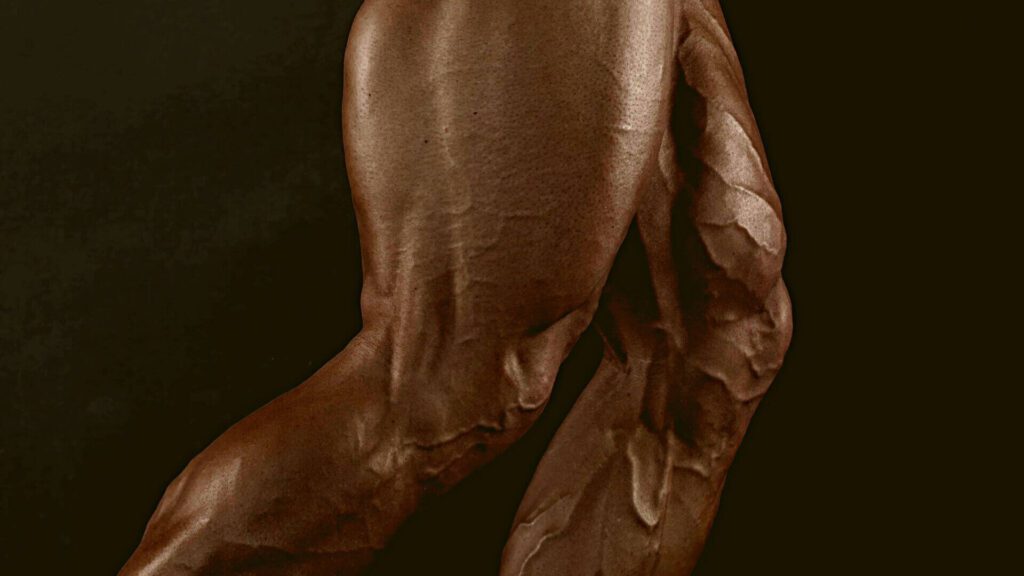Quadriceps, or simply “quads,” are the group of four muscles located at the front of your thigh. They play a vital role in supporting your knee and hip joints and are essential for activities like running, jumping, and even walking.
But while building strong quads is important, it’s equally essential to target the inner quads, which are often neglected. In this article, we’ll explore why inner quads matter, and how you can sculpt them with some killer workouts.
In this article, we will take a closer look at some of the best exercises you can do to target your inner quads and help you achieve the results you’re after. Whether you’re a seasoned athlete or just starting out on your fitness journey, these workouts are sure to challenge you and help you get one step closer to reaching your goals. So, get ready to feel the burn and start sculpting your inner quads!
Why Target Inner Quads?
The quadriceps muscle group is one of the largest muscle groups in the body, playing a crucial role in many everyday movements such as walking, running, jumping, and climbing stairs.
The vastus medialis, specifically, is located on the inner aspect of the thigh and is responsible for knee stability and extension.
The vastus medialis is considered a slow-twitch muscle, meaning it is designed for endurance and can perform repetitive contractions for a long period of time without tiring.
This muscle also works in tandem with the other quadriceps muscle heads to perform knee extension, but its location closer to the midline of the body gives it a unique role in knee stability.
A well-developed vastus medialis helps to prevent knee valgus, a condition in which the knee collapses inward during weight-bearing activities, increasing the risk of knee injury.
Strengthening the vastus medialis can also improve overall leg balance and stability, leading to improved performance in a variety of physical activities.
NOTE:
It’s important to prioritize your safety and well-being when performing any exercise. If you experience any discomfort or pain in your knees during the cable hip adduction, it’s best to stop and rest. Continuing to exercise through pain can lead to further injury and delay the healing process.
Before starting this exercise or any new exercise routine, it’s recommended that you consult with a healthcare professional, especially if you have any existing knee or joint concerns or injuries.
Your healthcare professional can evaluate your current condition and determine if this exercise is safe for you to perform, and provide recommendations for modifications if necessary.
Killer Workouts to Sculpt Inner Quads
Here are six workouts to help you sculpt your inner quads and build strength in this often-neglected muscle group.
- Lateral Lunges
- Sumo Squats
- Cossack Squat
- Bulgarian Split Squats
- Copenhagen Plank
- Cable Hip Adduction

Lateral Lunges
Lateral lunges can indeed be a great workout for your inner quads, as well as for other muscle groups in your legs and hips.
The lateral lunge is a unilateral exercise, meaning that you work one leg at a time, which can help to target and strengthen your inner quads more effectively.
When you perform a lateral lunge, your inner quad is engaged as you step out to the side and lower your body towards the ground. This motion works to stretch and activate the muscle fibers in your inner quad, which can help to improve its strength and endurance over time.
Step-by-Step Guide for Lateral Lunges:
- Set up:
- Stand with your feet hip-width apart and your hands on your hips.
- Keep your chest lifted and core engaged.
- Lowering:
- Begin by taking a large step to the side with one foot, bending your knee and lowering your hips towards the ground.
- Keep your weight in the heel of the stepping foot, avoiding any excessive arching or rounding in your lower back.
- Ensure that your knee is directly above your ankle and not extending beyond your toes.
- Upward movement:
- Push through the heel of the stepping foot to raise yourself back to the starting position.
- Keep your core engaged and chest lifted.
- Repetition:
- Repeat the movement for the desired number of reps on one side, then switch legs and repeat on the other side.
- Perform 2-3 sets of 8-12 reps per leg for a challenging lower body workout.
- Form:
- Maintain proper form throughout the entire movement by keeping your core engaged, chest lifted, and weight in your heels.
- Avoid any excessive arching or rounding in your lower back, and keep your knees tracking directly above your ankles.
Sumo Squats
Sumo squats can be a killer inner quad workout because of the unique muscle activation that occurs during this exercise.
Sumo squats are performed with a wide stance and the feet turned outwards, which recruits the adductor muscles (inner thighs) to a greater extent compared to traditional squats with a narrow stance.
Additionally, the wider stance also places greater emphasis on the inner quadriceps (vastus medialis), which is responsible for knee stability and control.
By targeting the inner thighs and inner quadriceps, sumo squats can effectively target and strengthen these muscle groups for improved athletic performance and functional fitness.
Step-by-Step Guide for Sumo Squats:
- Set up:
- Stand with your feet slightly wider than shoulder-width apart, with your toes pointing outwards.
- Hold a weight in each hand, such as dumbbells or a barbell, or use a kettlebell held in front of your body.
- Keep your chest lifted and core engaged.
- Lowering:
- Begin by bending your knees and lowering your hips towards the ground, keeping your core engaged and chest lifted.
- Keep your weight in your heels and avoid collapsing your chest or arching your lower back.
- Upward movement:
- Push through your heels to raise yourself back to the starting position.
- Keep your knees tracking over your toes and avoid letting them collapse inwards.
- Repetition:
- Repeat the movement for the desired number of reps, focusing on maintaining proper form and control.
- Perform 2-3 sets of 8-12 reps for a challenging lower body workout.
- Form:
- Maintain proper form throughout the entire movement by keeping your core engaged, chest lifted, and weight in your heels.
- Avoid any excessive arching or rounding in your lower back, and keep your knees tracking over your toes.
Cossack Squat
The Cossack Squat targets the inner quads by requiring the knee to move laterally and descend towards the floor, while keeping the foot planted in place. This movement challenges the balance and stability of the knee, leading to increased activation of the quads.
In addition to targeting the inner quads, the Cossack Squat also works the glutes, hamstrings, and outer quads, making it a comprehensive exercise for lower body strength and stability.
It’s important to perform this exercise with proper form, making sure to keep the chest up, the back straight, and the weight evenly distributed between both legs.
Step-by-Step Guide for Cable Hip Adduction:
- Set up:
- Stand facing a cable machine and attach an ankle strap to the lower pulley.
- Stand with your feet hip-width apart and place one ankle in the ankle strap.
- Keep your chest lifted and core engaged.
- Lowering:
- Begin by stepping away from the cable machine, pulling the ankle strap towards you and raising your leg towards the opposite hip.
- Keep your core engaged and chest lifted throughout the movement.
- Upward movement:
- Lower your leg back to the starting position, feeling a stretch in the inner thigh and hip adductor muscle.
- Avoid any excessive arching or rounding in your lower back.
- Repetition:
- Repeat the movement for the desired number of reps on one side, then switch legs and repeat on the other side.
- Perform 2-3 sets of 8-12 reps per leg for a challenging inner thigh and hip adductor workout.
- Form:
- Maintain proper form throughout the entire movement by keeping your core engaged, chest lifted, and weight evenly distributed.
- Avoid any excessive arching or rounding in your lower back, and focus on controlling the movement with the hip adductor muscle.
Bulgarian Split Squats
Bulgarian split squats can be an effective inner quad workout because they target the quadriceps muscle group while also putting a significant amount of emphasis on the hip adductors and the gluteus medius.
This exercise involves placing one foot behind you, elevated on a bench or step, while you perform a lunge with the opposite foot.
The elevated position of the rear foot allows for a deeper stretch of the front leg’s quadriceps, which can result in a greater activation of the muscle fibers. Additionally, the split stance also forces the hip adductors to work harder to maintain balance, adding an extra challenge to the workout.
To maximize the inner quad and hip adductor activation, it’s important to keep your front knee directly over your ankle and to control your movements, avoiding any excessive swaying. You can also hold weights or perform this exercise using resistance bands to increase the intensity of the workout.
Step-by-Step Guide for Bulgarian Split Squats:
- Set up:
- Stand with your feet hip-width apart and place one foot behind you on a bench or step, making sure it is elevated.
- Hold a weight in each hand or use resistance bands.
- Keep your chest lifted and core engaged.
- Lowering:
- Begin by bending your front knee and lowering your back knee towards the ground, keeping your core engaged and chest lifted.
- Keep your front knee directly over your ankle, not extending beyond your toes.
- Ensure that your weight is evenly distributed between both legs.
- Upward movement:
- Push through your front heel to raise yourself back to the starting position.
- Avoid any excessive swaying or excessive rotation of the hips.
- Repetition:
- Repeat the movement for the desired number of reps, then switch legs and repeat on the other side.
- Perform 2-3 sets of 8-12 reps per leg for a challenging inner quad workout.
- Form:
- Maintain proper form throughout the entire movement by keeping your core engaged, chest lifted, and front knee directly over your ankle.
- Avoid any excessive arching or rounding in your lower back.
Copenhagen Plank
The Copenhagen Plank, also known as the Side Plank, is an effective exercise for building and strengthening the inner quads due to its unique balance and stability challenge.
This exercise requires the inner quads to work together with the glutes and core to maintain balance and control, which helps to build strength in these muscle groups.
Additionally, the Copenhagen Plank helps to improve the overall stability and coordination of the body, which is important for injury prevention and overall performance. By regularly incorporating the Copenhagen Plank into your workout routine, you can target the inner quads and help to build a strong, stable foundation for athletic performance.
Step-by-Step Guide for Copenhagen Plank:
- Set up:
- Begin in a push-up position with your hands placed slightly wider than shoulder-width apart.
- Keep your core engaged and chest lifted.
- Movement:
- Shift your weight to one arm, bringing your outside hip down towards the ground while maintaining a straight line from your head to your feet.
- Return to the starting position and repeat the movement on the other side.
- Repetition:
- Repeat the movement for the desired number of reps on each side, aiming for 8-12 reps per side.
- Perform 2-3 sets for a challenging core workout.
- Form:
- Maintain proper form throughout the entire movement by keeping your core engaged, chest lifted, and legs and torso straight.
- Avoid any excessive twisting or bending in the lower back, and focus on maintaining a stable, controlled movement.
Cable Hip Adduction
Cable Hip Adduction is an exercise that specifically targets the inner thigh muscles, also known as the adductor muscles. The adductors play an important role in stabilizing the hips and helping with movements such as walking and running.
By targeting these muscles with Cable Hip Adduction, you can improve hip stability and strengthen the inner thighs, contributing to overall lower body strength and stability. In order to perform Cable Hip Adduction, you will need access to a cable machine.
Step-by-Step Guide for Cable Hip Adduction:
- Set up:
- Stand facing a cable machine and attach an ankle strap to the lower pulley.
- Stand with your feet hip-width apart and place one ankle in the ankle strap.
- Keep your chest lifted and core engaged.
- Lowering:
- Begin by stepping away from the cable machine, pulling the ankle strap towards you and raising your leg towards the opposite hip.
- Keep your core engaged and chest lifted throughout the movement.
- Upward movement:
- Lower your leg back to the starting position, feeling a stretch in the inner thigh and hip adductor muscle.
- Avoid any excessive arching or rounding in your lower back.
- Repetition:
- Repeat the movement for the desired number of reps on one side, then switch legs and repeat on the other side.
- Perform 2-3 sets of 8-12 reps per leg for a challenging inner thigh and hip adductor workout.
- Form:
- Maintain proper form throughout the entire movement by keeping your core engaged, chest lifted, and weight evenly distributed.
- Avoid any excessive twisting or turning in your torso or hips, and focus on controlling the movement with the hip adductor muscle.
Tips for Effective Inner Quad Workouts
Here are some tips and techniques to help you get the most out of your inner quad workouts:
- Warm-up: Before starting your workout, it is important to warm up your muscles to reduce the risk of injury. Dynamic stretching, light cardio, and a few warm-up sets of your chosen exercises can help prepare your body for the workout.
- Correct form: Make sure to maintain proper form during each exercise to avoid injury and maximize muscle activation. Focus on slow and controlled movements, keeping your core engaged and maintaining proper alignment of your spine and hips.
- Progress gradually: Increase the weight, reps, or resistance gradually over time to prevent injury and avoid plateaus in your training.
- Mix it up: Incorporate a variety of inner quad exercises into your routine to target different muscle fibers and avoid boredom.
- Stretch: After your workout, make sure to stretch your inner thigh muscles to help reduce muscle soreness and promote recovery.
Sculpting your inner quads is key to unlocking athletic potential. With these exercises, you can build strength, reduce injury risk, and perform better. Proper form, control, and progressive challenge are key to success. So get ready to unleash the inner athlete in you, and start sculpting your inner quads with these killer workouts today!

